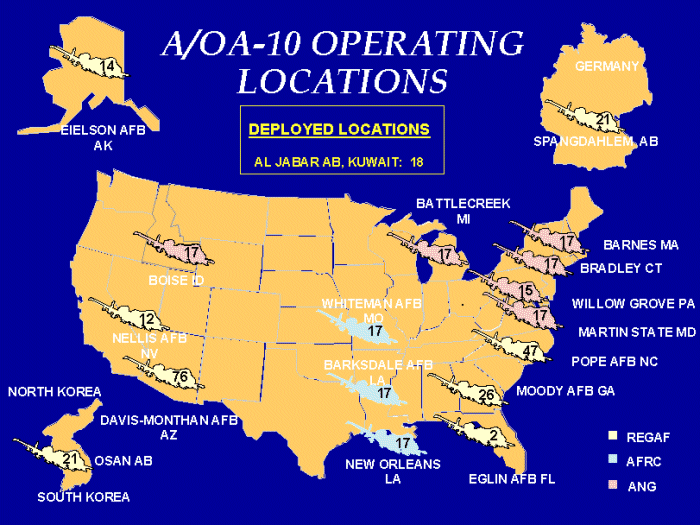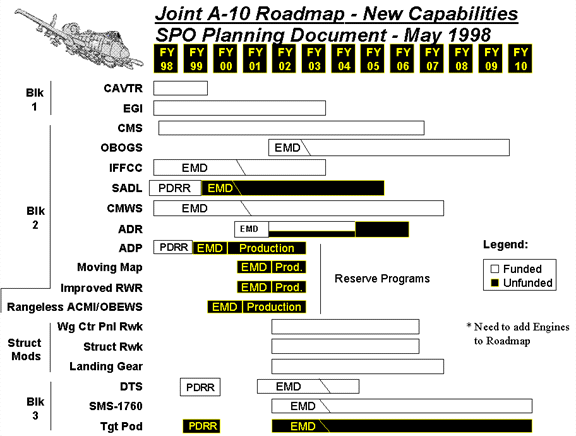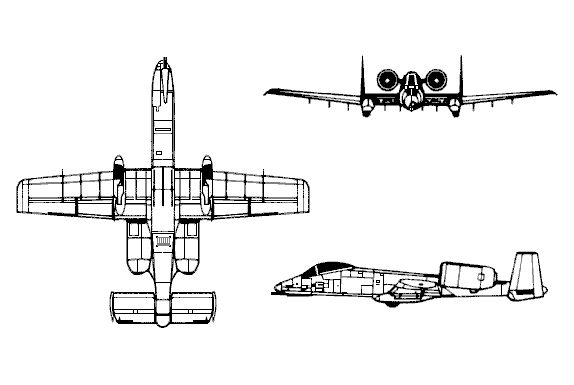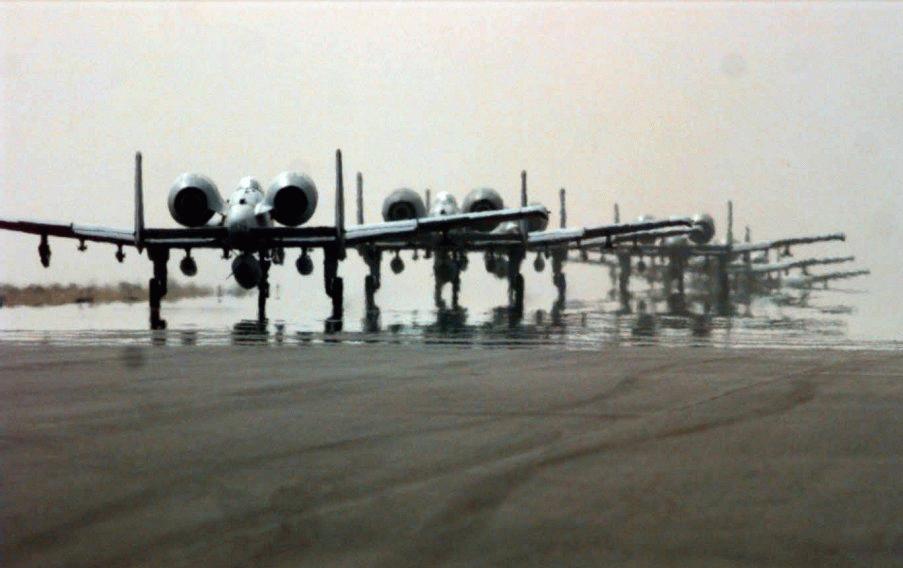|
|
 发表于 29-12-2005 10:53 AM
|
显示全部楼层
发表于 29-12-2005 10:53 AM
|
显示全部楼层
|
|
|
|
|
|
|
|
|
|
|
 发表于 29-12-2005 05:41 PM
|
显示全部楼层
发表于 29-12-2005 05:41 PM
|
显示全部楼层
|
|
|
|
|
|
|
|
|
|
|
 发表于 29-12-2005 06:03 PM
|
显示全部楼层
发表于 29-12-2005 06:03 PM
|
显示全部楼层
谢谢凌静交友兄。你的资料在哪儿找的?我是一名yf-23迷。稀望她能败部复活。
兔子兄,她是战机啦,炸蛋可载但不多。fb-23 才会多载一点。 |
|
|
|
|
|
|
|
|
|
|
|
 发表于 29-12-2005 06:16 PM
|
显示全部楼层
发表于 29-12-2005 06:16 PM
|
显示全部楼层
原帖由 lowky 于 29-12-2005 06:03 PM 发表
谢谢凌静交友兄。你的资料在哪儿找的?我是一名yf-23迷。稀望她能败部复活。
兔子兄,她是战机啦,炸蛋可载但不多。fb-23 才会多载一点。
不客气
呵呵
我这些资料是。。。去 google输入 yf-23, yf-23 战机,然后再一个一个整理,综合出来的
呵呵
YF-23,不久后就会复活了,放心
呵呵
她如果放一颗 B-61 核弹 就等于其他传统轰炸机了
不过不好啦,要和平。。。。
[ 本帖最后由 宁静交友 于 29-12-2005 06:19 PM 编辑 ] |
|
|
|
|
|
|
|
|
|
|
|
 发表于 29-12-2005 06:28 PM
|
显示全部楼层
发表于 29-12-2005 06:28 PM
|
显示全部楼层
|
|
|
|
|
|
|
|
|
|
|
 发表于 31-12-2005 11:12 AM
|
显示全部楼层
发表于 31-12-2005 11:12 AM
|
显示全部楼层
|
fb-23 还是 fb-23。 她的美可不是盖的(这是指yf-23)。 |
|
|
|
|
|
|
|
|
|
|
|
 发表于 31-12-2005 11:27 AM
|
显示全部楼层
发表于 31-12-2005 11:27 AM
|
显示全部楼层
|
|
|
|
|
|
|
|
|
|
|
 发表于 7-1-2006 06:05 AM
|
显示全部楼层
发表于 7-1-2006 06:05 AM
|
显示全部楼层
A-10“雷电”(Thunderbolt)

A- 10是美国费尔柴尔德公司为美空军研制的亚音速近距空中支援攻击机,主要用于攻击坦克群和战场上的活动目标及重要人力点,是目前美国空军的主要近距空中支援攻击机。1966年美国空军提出研制新型攻击机计划,1970年3月选中方案,原型机于1972年5月首次试飞。经与诺斯罗普公司的A-9原型机及已服役的A-7攻击机两次对比竞争试飞,至1974年底A-10才被批准投入生产。1975年生产型A一1OA交付使用。A-10采用平直机翼、双垂尾布局。该飞机的低空亚音速性能好;生存力高,座舱周围有“澡盆”式厚度为3.8厘米的防弹装甲,机身腹部的装甲厚5厘米,全机装甲总重55O千克,可承受23毫米炮弹的打击,此外还有结构简单,反应灵活,短距起落等优点。在1991年l~2月的海湾战争中,有120架A-10参战,该机在反坦克中发挥了很大的作用。至1984年3月AIO停产,费尔柴尔德公司共向美国空军交付707架。至1979年底,A-IO的研制费为3285亿美元,A-10A的单价为 1250万美元(1983年美元值)。
动力装置
两台通用电气公司的TF34-GE-10O涡扇发动机,单台最大推力为40.9千牛(4175公斤)。
主要机载设备
平视显示器,战术突防设备,与激光目标识别器配合使用的武器投放设备,“幼畜”空对地导弹和“响尾蛇”空对空导弹发射设备,X波段应答器及主动和被动式电子对抗设备等。
武器
一门30毫米GAU-8/A 7管速射机炮,备弹1350发,可击穿较厚的装甲,主要用于攻击坦克和装甲车辆。11个挂架,最大外挂载荷7250千克。典型的挂弹方案有:28颗 MK80炸弹;20颗“石眼”Ⅱ集束炸弹,若干CBU-52/71/38/7O子母弹箱;6枚AGM-65“幼畜”空对地导弹和两枚AIM-9E/J响尾蛇”空对空导弹;4个火箭发射架等。
尺寸数据
翼展17.53米,机长16.26米,批高4.47米,机翼面积47.01平方米、展弦比6.54、相对厚度12%,主轮踞5.25米,前主轮距5.40米。
重量数据
使用空重11320千克,最大起飞重量22680千克,正常起飞重量20032千克,燃油量(机内)4853千克,(副油箱)3 X 2270升。
性能数据
限制飞行速度 834公里/小时,作战飞行速度(高度1500米,带6颗MK82炸弹)713公里/小时,巡航速度(高度1525米最大起飞重量)623公里/小时,实用升限9144~11000米,近距支援活动半径463公里,纵深攻击活动半径1000公里,转场航程4850公里,起飞距离(最大总重)1372米、(前线机场起飞重量)422米,着陆距离(最大总重)762米、(前线机场起飞重量)325米。
========
|
|
|
|
|
|
|
|
|
|
|
|
 发表于 7-1-2006 06:07 AM
|
显示全部楼层
发表于 7-1-2006 06:07 AM
|
显示全部楼层

A-10/OA-10 Thunderbolt II
The A-10 and OA-10 Thunderbolt IIs are the first Air Force aircraft specially designed for close air support of ground forces. They are simple, effective and survivable twin-engine jet aircraft that can be used against all ground targets, including tanks and other armored vehicles.
The primary mission of the A-10 is to provide day and night close air combat support for friendly land forces and to act as forward air controller (FAC) to coordinate and direct friendly air forces in support of land forces. The A-10 has a secondary mission of supporting search and rescue and Special Forces operations. It also possesses a limited capability to perform certain types of interdiction. All of these missions may take place in a high or low threat environment.
The A/OA-10 aircraft was specifically developed as a close air support aircraft with reliability and maintainability as major design considerations. The Air Force requirements documents emphasized payload, low altitude flying capability, range and loiter capability, low speed maneuverability and weapons delivery accuracy. The aircraft is capable of worldwide deployment and operation from austere bases with minimal support equipment.
Specific survivability features include titanium armor plated cockpit, redundant flight control system separated by fuel tanks, manual reversion mode for flight controls, foam filled fuel tanks, ballistic foam void fillers, and a redundant primary structure providing “get home” capability after being hit. Design simplicity, ease of access and left to right interchangeable components make the A/OA-10 aircraft readily maintainable and suitable for deployment at advanced bases.
The A-10/OA-10 have excellent maneuverability at low air speeds and altitude, and are highly accurate weapons-delivery platforms. They can loiter near battle areas for extended periods of time and operate under 1,000-foot ceilings (303.3 meters) with 1.5-mile (2.4 kilometers) visibility. Their wide combat radius and short takeoff and landing capability permit operations in and out of locations near front lines. Using night vision goggles, A-10/ OA-10 pilots can conduct their missions during darkness.
The A/OA-10 is a single place, pressurized, low wing and tail aircraft with two General Electric TF-34-100/A turbo-fan engines, each with a sea level static thrust rating of approximately 9000 pounds. The engines are installed in nacelles mounted on pylons extending from the fuselage just aft of and above the wing. Two vertical stabilizers are located at the outboard tips of the horizontal stabilizers. The forward retracting tricycle landing gear incorporates short struts and a wide tread. The nose wheel retracts fully into the fuselage nose. The main gear retracts into streamlined fairing on the wing with the lower portion of the wheel protruding to facilitate emergency gear-up landings. The General Electric Aircraft Armament Subsystem A/A49E-6 (30 millimeter Gun System) is located in the forward nose section of the fuselage. The gun system consists of the 30mm Gatling gun mechanism, double-ended linkless ammunition feed, storage assembly and hydraulic drive system.
Avionics equipment includes communications, inertial navigation systems, fire control and weapons delivery systems, target penetration aids and night vision goggles. Their weapons delivery systems include head-up displays that indicate airspeed, altitude and dive angle on the windscreen, a low altitude safety and targeting enhancement system (LASTE) which provides constantly computing impact point freefall ordnance delivery; and Pave Penny laser-tracking pods under the fuselage. The aircraft also have armament control panels, and infrared and electronic countermeasures to handle surface-to-air-missile threats.
The Thunderbolt II's 30mm GAU-8/A Gatling gun can fire 3,900 rounds a minute and can defeat an array of ground targets to include tanks. Some of their other equipment includes an inertial navigation system, electronic countermeasures, target penetration aids, self-protection systems, and AGM-65 Maverick and AIM-9 Sidewinder missiles.
Thunderbolt IIs have Night Vision Imaging Systems (NVIS), compatible single-seat cockpits forward of their wings and a large bubble canopy which provides pilots all-around vision. The pilots are encircled by titanium armor that also protects parts of the flight-control system. The redundant primary structural sections allow the aircraft to enjoy better survivability during close air support than did previous aircraft. The aircraft can survive direct hits from armor-piercing and high-explosive projectiles up to 23mm. Their self-sealing fuel cells are protected by internal and external foam. Their redundant hydraulic flight-control systems are backed up by manual systems. This permits pilots to fly and land when hydraulic power is lost.
The Thunderbolt II can be serviced and operated from bases with limited facilities near battle areas. Many of the aircraft's parts are interchangeable left and right, including the engines, main landing gear and vertical stabilizers.
The first production A-10A was delivered to Davis-Monthan Air Force Base, Ariz., in October 1975. It was designed specially for the close air support mission and had the ability to combine large military loads, long loiter and wide combat radius, which proved to be vital assets to America and its allies during Operation Desert Storm. In the Gulf War, A-10s, with a mission capable rate of 95.7 percent, flew 8,100 sorties and launched 90 percent of the AGM-65 Maverick missiles.
Service Life
The original service life of the A/OA-10 was 8,000 hours, equating to approximately to FY2005. The revised service life was projected out to 12,000 hours, equating to approximately FY2016. The most recent long range plan has the A/OA-10 in the fleet through FY2028, which equates to approximately 18,000-24,000 hours.
A/OA-10 modifications are aimed at improving the A/OA-10 throughout the its service life. All modifications are integrated between ACC, AFRC, and ANG, with the Guard and Reserve often funding non-recurring engineering efforts for the modifications and ACC opting for follow-on production buys. Budgetary constraints are often best overcome by this type of arrangement. Two types of modifications are conducted on the A/OA-10, those to systems, structures and engines, and those to avionics. Structure, system and engine modifications aim at improving reliability, maintainability and supportability of the A/OA-10 and reducing the cost of ownership. Avionics modifications continue the metamorphosis of the A/OA-10 from a day visual flight rules (VFR) fighter to a night-capable integrated weapon system.
A/OA-10 avionics modifications provide for greater interoperability between the Army and Air Force by improving situational awareness, tactical communication, navigation and weapon system accuracy, and providing additional capabilities in the areas of threat detection and avoidance, low-level flight safety, stores management and employment of “smart” weapons. In addition, modifications are sought to reduce cost of ownership and to remove supportability quagmires such as obsolete parts. Modifications to the A/OA-10 are nearly always interdependent—interdependence maximizes combat capability of the A/OA-10 by interconnecting modifications in distributed avionics architecture. Integral to the improvement of the A/OA-10 is a new acquisition strategy centered on a recently acquired prime contractor for the weapon system. The prime contractor will be the integrator of all major weapon system modifications and provide the continuity necessary to accommodate the downward trend in organic manpower and relocation of the System Program Office.
|
|
|
|
|
|
|
|
|
|
|
|
 发表于 7-1-2006 06:07 AM
|
显示全部楼层
发表于 7-1-2006 06:07 AM
|
显示全部楼层
A large portion of the systems sustaining engineering is for contingency use throughout the fiscal year and is utilized to investigate mishaps, resolve system deficiencies, develop engineering change proposals, or to establish new operational limits. Specific requirements cannot be forecast, but general needs can be predicted based on actual occurrences since the A/OA-10 program management responsibility transferred to SM-ALC in 1982. The objectives of the sustaining engineering and configuration management programs are to reduce spares utilization, reduce hazard potentials and to increase the weapon system's effectiveness. Sustaining Engineering is mission critical and will be used to obtain the non-organic engineering services needed to maintain and improve the design and performance.
The A/OA-10 weapon system was originally designed for manual pilot operation and control. In 1990, the aircraft was modified to incorporate the Low Altitude Safety and Targeting Enhancements (LASTE) System. This system provided computer-aided capabilities including a Ground Collision Avoidance System (GCAS) to issue warnings of impending collision with the ground, an Enhanced Attitude Control (EAC) function for aircraft stabilization during gunfire and a Low Altitude Autopilot system, and computed weapon delivery solutions for targeting improvements. The LASTE computer system installation added the requirement for an Operational Flight Program (OFP) to provide the computer control software necessary to perform the above functions.
Commencing in 1999, the A/OA-10 fleet was additionally upgraded with the installation of an Embedded Global Positioning System/Inertial Navigation System (EGI). In conjunction with this aircraft modification, a replacement Control Display Unit (CDU) will be installed with its own separate OFP software.
Operational capability changes, mission changes, latent system deficiencies, and additional user requirements dictate the necessity of periodic OFP block change cycles (BCC) to maintain the weapon system operational requirements. The current BCC includes the LASTE OFP changes, but will additionally require the CDU OFP updates to be accomplished concurrently following the installations of EGI/IDM Modification. Following installation of the original LASTE System, corrections to original system deficiencies, added user requirements, and now the pending EGI modification program have increased the total requirements for the LASTE computer hardware to its maximum design capability. Implementation of the current OFP software change will result in maximum utilization of the computer's memory and throughput, precluding any further operational change requirements from being implemented. In anticipation of this hardware limitation, engineering Reliability and Maintainability (R&M) project was initiated in 1993 to develop options to correct this deficiency. This project is developing an engineering hardware unit, along with an updated OFP software program, for test and evaluation.
The addition of the LASTE system and the pending installation of the EGI/CDU system have greatly increased the complexity of the A/OA-10 weapon system, including the troubleshooting and maintenance requirements. Also, the implementation of the 2-level maintenance system, eliminating the intermediate-level maintenance capabilities at the operating units, has necessitated improved troubleshooting capabilities at the unit levels to maintain the aircraft operational readiness requirements. An Operational Test System (OTS) has been developed to provide a computer test aid for the organizational maintenance units to expedite their maintenance actions. The OTS contains a software test program that requires periodic updates to maintain compatibility with the LASTE and CDU systems, as well as other A/OA-10 avionics systems.
TF-34 engines are essentially two level maintenance via user Queen Bee sites at Barksdale, Davis-Monthan and Shaw AFBs. All ACC aircraft TF-34 engines are repaired at Davis-Monthan or Shaw AFB. Shaw AFB also supports USAFE. PACAF uses a combination of two and three level maintenance; Osan AB utilizes regional support provided at Kadena AB, while Eielson AFB performs Jet Engine Intermediate Maintenance (JEIM) on-sight. Barksdale AFB regionally supports AFRC. The ANG remains entirely supported by base field JEIM shops. Depot level engine maintenance is accomplished by the Navy at Jacksonville NAS, FL. The A/OA-10 has 51 avionics line replaceable units that transitioned to two level maintenance.
The A/OA-10 was designed for user maintenance in all normal maintenance inspections and tasks. This design has been very successful for this aspect and there is every expectation this will continue for the life of the weapon system. The only depot level requirements are Analytical Condition Inspection (ACI) and unscheduled depot level repair.
ACI is a specialized inspection to check areas, sub-systems or parts that are not checked on any periodic basis during normal maintenance. The purpose of the ACI is to find developing problems that might affect the mission or ensure such conditions do not exist. Problems discovered during ACI result in engineering studies that determine appropriate corrective action. There are 11 ACI aircraft selected (by usage, age, flight hours and environment) from different bases and MAJCOMs that are scheduled per fiscal year. The ACIs are accomplished at OO-ALC.
Unscheduled depot repair occurs when an aircraft incident, accident or other unusual occurrence creates a problem beyond the users ability to correct. Such occurrences result in a request from the MAJCOM for depot assistance. Depending on the situation, the aircraft may be inducted into a depot or contractor facility, or a depot or contractor field team may be dispatched to the location of the aircraft.
The A/OA-10 has a requirement for repaint every eight years. The fleet size sets the current requirement to approximately 65 per fiscal year. While this is not strictly a depot requirement, the need for a fixed, specialized and environmentally contained facility limits the user in his choices. The A/OA-10 is primarily painted atOO-ALC; however, Daimler-Benz AG in Germany paints USAFE aircraft. For economic reasons the 11 ACI aircraft inducted into OO-ALC each year are also painted.


Specifications
Primary Function A-10 -- close air support, OA-10 - airborne forward air control
Contractor Fairchild Republic Co.
Power Plant Two General Electric TF34-GE-100 turbofans
Thrust 9,065 pounds each engine
Length 53 feet, 4 inches (16.16 meters)
Height 14 feet, 8 inches (4.42 meters)
Wingspan 57 feet, 6 inches (17.42 meters)
Speed 420 miles per hour (Mach 0.56)
Ceiling 45,000 feet (13,636 meters)
Maximum Takeoff Weight 51,000 pounds (22,950 kilograms)
Range 800 miles (695 nautical miles)
Armament One 30 mm GAU-8/A seven-barrel Gatling gun;
up to 16,000 pounds (7,200 kilograms) of mixed ordnance on eight under-wing and three under-fuselage pylon stations, including infrared countermeasure flares; electronic countermeasure chaff; jammer pods; 2.75-inch (6.99 centimeters) rockets; illumination flares and:
MK-82 (500 pound bomb)
MK-84 (2000 pound bomb)
MK77 incendiary
10 MK20 Rockeye II (4 - 6 standard load)
10 CBU-52 (4 - 6 standard load)
10 CBU-58 (4 - 6 standard load)
10 CBU-71 (4 - 6 standard load)
10 CBU-87 (4 - 6 standard load)
10 CBU-89 (4 - 6 standard load)
CBU-97
10 BL755 (4 - 6 standard load)
AGM-65 Maverick missiles
GBU-10 laser-guided bomb
GBU-12 laser-guided bomb
AIM-9 Sidewinder missiles
# Systems AN/ALE-40
# AN/ALQ-119
Crew One
Date Deployed March 1976
Unit Cost $FY98
[Total Program] $13 million



太长了,没办法放进一个帖子,自己去看[补充资料]吧
[ 本帖最后由 宁静交友 于 7-1-2006 10:03 AM 编辑 ] |
|
|
|
|
|
|
|
|
|
|
|
 发表于 7-1-2006 06:13 AM
|
显示全部楼层
发表于 7-1-2006 06:13 AM
|
显示全部楼层
比起其他的战斗机,我比较喜欢这架,
为什么?
不要看它丑,笨重,慢,古董等等
它可是著名的 “坦克杀手”哦!
它的30毫米GAU-8/A 7管速射机炮,备弹1350发,可以击毁装甲坦克
而且它机枪独特的 声音。。。很酷哦
不知道你们有没有听过它发射子弹的声音呢?
如果没有的话,可以去看看一些以前的海湾战争1和最近的海湾战争2,A-10的出现率很高哦。
不过很多人说它要退休了,有点可惜。。。。。 |
|
|
|
|
|
|
|
|
|
|
|
 发表于 7-1-2006 10:10 AM
|
显示全部楼层
发表于 7-1-2006 10:10 AM
|
显示全部楼层
|
|
|
|
|
|
|
|
|
|
|
 发表于 8-1-2006 01:44 AM
|
显示全部楼层
发表于 8-1-2006 01:44 AM
|
显示全部楼层
原帖由 杀手涧 于 7-1-2006 10:10 AM 发表
楼主辛苦了,我到那个网站接着去看了,写的不错哦
呵呵
终于有人回我了
感谢 ing!!!
哈哈
可惜,其他人很像很不喜欢A-10的,没有人要回贴。。。。 |
|
|
|
|
|
|
|
|
|
|
|
 发表于 8-1-2006 01:53 AM
|
显示全部楼层
发表于 8-1-2006 01:53 AM
|
显示全部楼层
我来支持!
目前都是倾向于电子作战,可能这样造成雷电的用途没以前的好。 |
|
|
|
|
|
|
|
|
|
|
|
 发表于 8-1-2006 02:03 AM
|
显示全部楼层
发表于 8-1-2006 02:03 AM
|
显示全部楼层
原帖由 葉孤一座城 于 8-1-2006 01:53 AM 发表
我来支持!
目前都是倾向于电子作战,可能这样造成雷电的用途没以前的好。
哈哈
谢谢
唉,对咯,都是电子作战,害到A-10江河日下。。。。
都快要退休了。。。。。
A-10现在要怎么改来适应现在的电子作战时代都难啊 ,upgrade到不可以再up了
呵呵。
如果真的可以的话,叫美国送一架A-10过来马来西亚这里展览也好
呵呵 |
|
|
|
|
|
|
|
|
|
|
|
 发表于 8-1-2006 08:32 AM
|
显示全部楼层
发表于 8-1-2006 08:32 AM
|
显示全部楼层
|
|
|
|
|
|
|
|
|
|
|
 发表于 8-1-2006 03:59 PM
|
显示全部楼层
发表于 8-1-2006 03:59 PM
|
显示全部楼层
|
|
|
|
|
|
|
|
|
|
|
 发表于 12-1-2006 08:29 AM
|
显示全部楼层
发表于 12-1-2006 08:29 AM
|
显示全部楼层
原帖由 宁静交友 于 8-1-2006 02:03 AM 发表
哈哈
谢谢
唉,对咯,都是电子作战,害到A-10江河日下。。。。
都快要退休了。。。。。
A-10现在要怎么改来适应现在的电子作战时代都难啊 ,upgrade到不可以再up了
呵呵。
如果真的可以的话,叫美国 ...
短期内如果APACHE还不调整战术, 继续被打下来的话, 他们还会继续是打击装甲部队的主力 |
|
|
|
|
|
|
|
|
|
|
|
 发表于 12-1-2006 11:06 PM
|
显示全部楼层
发表于 12-1-2006 11:06 PM
|
显示全部楼层
|
|
|
|
|
|
|
|
|
|
|
 发表于 26-1-2006 03:59 PM
|
显示全部楼层
发表于 26-1-2006 03:59 PM
|
显示全部楼层
|
|
|
|
|
|
|
|
|
| |
 本周最热论坛帖子 本周最热论坛帖子
|